|
Sculptures
THE INTRICATE ISSUE OF BRONZE REPRODUCTIONS
|
By Adrian Darmon
The controversial debate launched by Florida artist and researcher Gary Arseneau concerning posthumous bronze casts of modern sculptures seems likely to prove futile especially as copies in the domain of bronzes have been commonly produced for centuries.

Degas Edgar
«Petite Danseuse de Quatorze Ans»
Gary Arseneau has claimed that most bronze sculptures by Degas, Barye and many other artists, which are being sold on the art market, are nothing else than fakes since these were cast posthumously. He added that Degas only produced wax models during his lifetime before they were made in bronze after his death and asked whether the artist would have given his consent for such process.
Arseneau has gone as far as describing posthumous works as fakes. The fact is not so simple as it would be in the case of paintings whereby works by are considered as genuine only if they have been produced by the artists themselves. The problem regarding bronzes is quite different and utterly intricate.
As a specialist in the history of bronzes I must confess that it is extremely difficult to determine whether a piece was conceived during the lifetime of an artist and whether he lent his hand during the casting process.
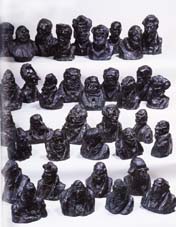
Daumier Honoré
«Les Célébrités du Juste Milieu»
(Celebrities, mainly parliamentarians), 36 bronze busts,
From 2600 B.-C. the Greeks copied the Greeks during many centuries before the Romans went on to copy them and we do not know for sure whether artists played an active role in the casting of pieces.
Many Roman founders came to copy Greek sculptures to meet the increasing demands of rich patrons before the Romans themselves started to carry out their own productions, which were in turn copied in many places of the Roman Empire. Many pieces that are appearing on the market should thus be considered as replicas of original sculptures often made one or two centuries before these copies were cast despite that fact they do sell quite well on the market where they are described as antique works.
During the Renaissance period, many sculptors were inspired by works that had been unearthed from Roman ruins, notably an equestrian statue of Emperor Marcus-Aurelius from the Second Century as well as other famous pieces, and the only bronze sculptures of that time considered as genuine are those held in Museums for which researchers have been able to pinpoint their history from the day they appeared.
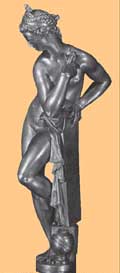
Giambologna (Flemish)
«Astronomy»
As an example, Giambologna was a prolific artist and the sculptures that we know for sure as made during his lifetime are now exhibited in the Bargello Museum in Florence. Still, Giambologna required the help of founders, notably Antonio Susini who was succeeded by his nephew Francesco.
Antonio Susini, who died at a respectable age in 1624, worked for Giambologna but also produced numerous copies after his works. Today, when falls across a Giambologna piece, it remains quite hard piece to ascertain whether it was cast before or after the death of that artist or whether it was made around the 1650s or even later.
Giambologna's bronzes were so popular that not only the Susinis copied them in Europe but once again, when well chased bronzes with great patinas appear on the market they usually fetch tremendous prices even though these were not produced by the artist himself. Most sculptures made before the 19th Century, which art historians consider as authentic are in fact marble, terracotta or wax pieces while bronze works were mostly copies made from plaster models designed by the artists themselves.
During the 1830s, a new way of reproducing bronze works called the Acolas process was invented in France. It notably enabled founders to produce works in various quantities and dimensions. Such industrial production led to a significant increase in sales of bronze pieces and enhanced the glory of several artists.
Some sculptors of the 19th Century established themselves as founders, notably Barye, but most went bankrupt after 1850 and left their works into the care of well-established firms, like Barbedienne or Susse Frères. The question raised by Arseneau is simply confining itself to semantics meaning that works conceived during the lifetime of an artist should be considered as much more valuable than those produced after his death.
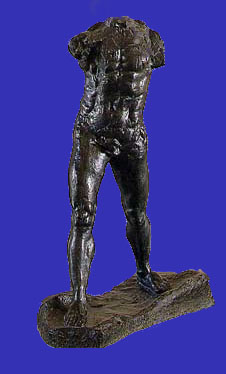
Auguste Rodin
"L'homme qui marche"
1900 - 1907, bronze, 213,5 x 71,7 x 156,5 cm
Barbedienne notably kept the original plasters made by Barye and other sculptors after they had disappeared but the works that were then produced could no longer be reworked by them. These pieces thus lack the final touch they would have brought and should be worth much less than those sculptures that were cast under their supervision.
One should however admit that bronze sculptures by Degas or Honoré Daumier are simply reproductions and certainly not original works. In addition, there have been many abuses regarding a large quantity of posthumous bronze works produced during the 20th Century notably following the agreements fetched between founders like Hébrard, Valsuani or Susse, and the heirs of several artists aimed at casting series in limited editions.
Many founders, notably Valsuani, went bankrupt during the 1960s and 1970s and the problem lies in the fact that large quantities of moulds were stolen by some unscrupulous people who went on to produce illegal casts. This resulted in several enormous scandals, notably regarding faked bronze works by Diego Giacometti, Rodin or Rembrandt Bugatti among others.
The problem regarding Rodin's bronzes is most peculiar and in that instance Gary Arseneau has certainly made in point in accusing the Musée Rodin in Paris of having flooded the market with reproductions, which he merely considers as fakes.
The Musée Rodin obtained the right to produce sculptures by Rodin over the years and many pieces cast during the past two decades have often been sold at auction without a proper description mentioning that these were modern pieces. In addition, Auguste Rodin also produced what we might term as spare parts, notably plaster legs, hands or heads which have been latter fitted accordingly so as to make complete pieces that he never designed. In this instance, Arseneau has been utterly right in denouncing such practice but apart from Rodin, his assertion that bronze reproductions are fakes seems exaggerated though museums, galleries and auction houses should be more explicit about the pieces they are showing or selling.
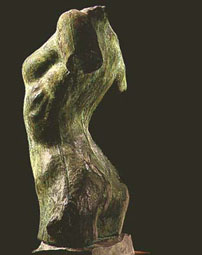
Auguste Rodin
"Torse arqué d'une femme", 1910, bronze, 86 x 48,1 x 32,2 cm |
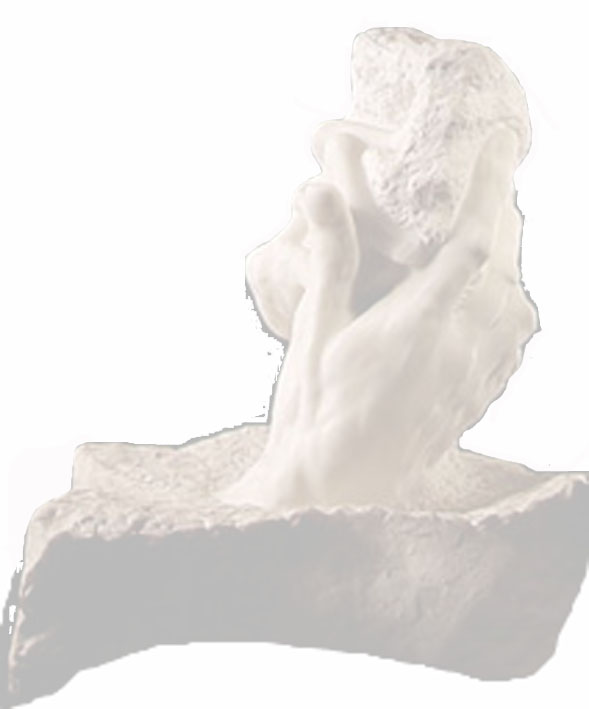
Auguste Rodin
"La Main de Dieu", 1896, marbre
94 x 82,5 x 54,9 cm |
In the meantime, we cannot take for granted that a bronze reproduction should be considered as much worthy as an original work. This is definitely the case regarding paintings but not concerning bronze works, which are part of a quite messy domain since works have been duplicated at will.
Now, bronzes sold as by Degas or Daumier should be described as "after" while those produced by so many artists during the 19th Century should carry the mention "posthumous" when they have been cast after their death. Things would then be much simpler especially as many collectors go for the beauty of a piece and do not take the care of paying a close attention to the period of its casting. This is somewhat regrettable as the market for bronze works needs some cleaning up so as to avoid future controversies.
Adrian Darmon
Professor, history of bronze sculpture,
E.A.C School Paris
|
|
|
|